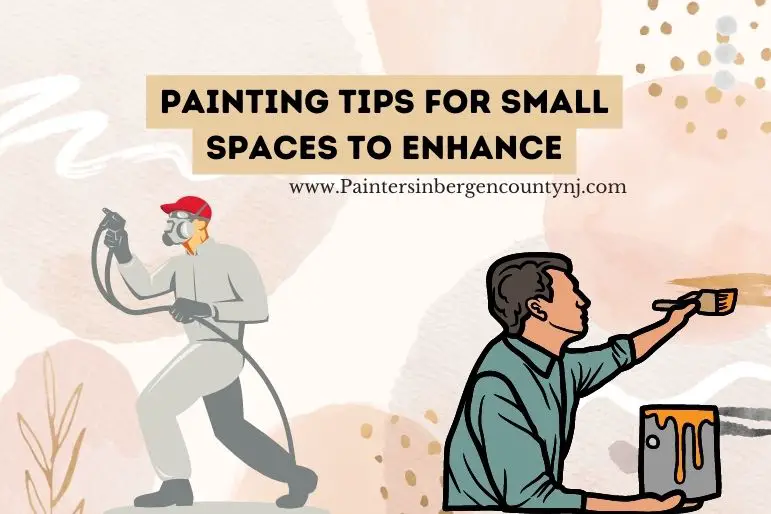Painting can transform a small room or tiny space, and make it feel more spacious, brighter, and airier. The right paint color and innovative painting techniques can create an illusion of more space, even in small rooms with a low ceiling or narrow dimensions. As an SEO and high-end copywriter, I’ve written this article to help you create a cozy factor and make a small room feel larger using paint.
Choosing the Best Paint Color for Small Spaces
When it comes to making a small space feel larger, the color of your paint plays a vital role. A common misconception is that light colors are the only option for small spaces. While light colors can make a space feel more expansive, using the same color on the walls and ceiling can create the illusion of a larger space. Using the same color, also known as color drenching, reduces the visual boundaries between walls and ceiling, creating a seamless and continuous look that makes a space feel more expansive.
Innovative Painting Techniques
Innovative painting techniques can also create an illusion of more space. High gloss paint creates a reflective surface that bounces light around the room, making it appear larger. Painting the walls and ceiling the same light color can make a small room feel larger. Painting a small room with bold colors can also make it feel larger by creating an optical illusion that makes the walls recede. Another painting technique is to use darker colors on the walls and lighter colors on the trim to create more depth.
Creating a Cozy Factor with Paint
Paint can also be used to create a cozy factor in small spaces. Using darker colors on the walls can create a warm and intimate feel, making a small room feel more inviting. Using darker colors on accent walls can also add interest and depth to a space.
{H2: Creating a Spacious Feel in Different Rooms}
Painting small spaces and rooms requires different techniques depending on the room’s purpose. Below are some tips for painting small rooms, powder rooms, small entryways, tiny kitchens, and living rooms.
Small Rooms, Powder Rooms, Small Entryways, and Tiny Kitchens
When painting small rooms, using light colors can create an illusion of more space. Dark walls can be overpowering in a small room, making it feel even smaller. Consider using light colors, like off-white or pale blue, to create a spacious feel. Using the same color on the walls and ceiling can also create a seamless look that makes the room appear more spacious. Consider using bold colors or wallpaper on one wall to create an accent wall and add interest to the space.
Living Rooms
Living rooms can be a challenge to paint, especially if they’re small. Choosing the right paint color can make all the difference. Using light colors can create a spacious feel, but using bold colors can also make a statement and add interest to the room. Consider using a single color on all the walls or creating an accent wall with a contrasting color.
{H2: Working with Interior Designers}
Working with an interior designer can take the stress out of choosing paint colors and designing a small space. Interior designers can help you choose the right paint color, create a cohesive color scheme, and select furniture and decor that maximizes your space.
Industry Related Terms
Tiny Room
Selecting the appropriate paint color is important to create the illusion of more space in small rooms. Light tones such as off-white or pale blue can provide a more expansive ambiance. Opting for consistent color on all walls can also produce a seamless appearance that amplifies the feeling of spaciousness.
Paint Tricks
If you want to enhance the look of your home or workplace, you can use paint tricks that can help you add some personality and style. By using specific tools, you can create unique designs and patterns on furniture, walls, or fabric. Check out these renowned paint trick methods that you can experiment with:
Ragging
Ragging is a technique that involves dipping a piece of fabric in paint and then applying it to a wall or other surface. This technique can produce an intriguing distressed look with fascinating patterns.
Sponging
To create a mottled effect, use the sponging technique. This involves dipping a sponge or foam into the paint and then applying it to the surface.
Stenciling
If you want to create patterns or words on walls and surfaces, stenciling is an excellent option. Stencils come in various sizes and designs that you can choose according to the needs of your project.
Splattering
One way to create engaging patterns and designs on surfaces is by splattering. Unlike stenciling, you use a brush to achieve this effect.
Bold Color
To paint small spaces with bold colors, choosing color combinations that complement each other is crucial. A color wheel can be useful in selecting the right mix of colors. Try using shades and tints of the same color for a striking yet balanced effect. This will add depth and contrast to the space without being too overpowering. Also, consider including white or other light colors to balance the boldness and add some brightness.
Conclusion
Painting small spaces requires careful consideration of paint color and innovative techniques that can create the illusion of more space. Utilizing natural light, playing with contrasting colors, and working with interior designers can help you make the most of your small space. Whether you’re painting a small room, powder room, small entryway, tiny kitchen, or living room, the right paint color can make all the difference.
Remember, when it comes to painting small spaces, there are no hard and fast rules. Get creative, experiment with different paint colors and techniques, and have fun! Your small space can be transformed into a cozy and inviting oasis that reflects your style and personality.

